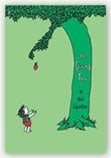Trees are the Answer says Co-Founder of Green Peace, Dr. Patrick Moore
By Dr. Patrick Moore
I believe that trees are the answer to a lot of questions about our future. These include: How can we advance to a more sustainable economy based on renewable fuels and materials? How can we improve literacy and sanitation in developing countries while reversing deforestation and protecting wildlife at the same time? How can we pull carbon out of the atmosphere and reduce the amount of greenhouse gases emissions, carbon dioxide in particular? How can we increase the amount of land that will support a greater diversity of species? How can we help prevent soil erosion and provide clean air and water? How can we make this world more beautiful and green? The answer is, by growing more trees and then using more wood, both as a substitute for non-renewable fossil fuels and materials such as steel, concrete and plastic, and as paper products for printing, packaging and sanitation.
The forest industry stands accused of some very serious crimes against the environment. It is charged with the extinction of tens of thousands of species, the deforestation of vast areas of the Earth, and the total and irreversible destruction of the ecosystem. If I were one of the urban majority, and I thought the forest industry was causing the irreversible destruction of the environment I wouldn't care how many jobs it created or how many communities depended on it, I would be against it.
I have spent the last 15 years trying to understand the relationship between forestry and the environment, to separate fact from fiction, myth from reality. Since 1991 I have chaired the Sustainable Forestry Committee of the Forest Alliance of British Columbia. This has provided an ideal opportunity to explore all aspects of the subject. This presentation is the synthesis of what I have learned. But first, let me give you a little background.
I was born and raised in the tiny fishing and logging village of Winter Harbour on the northwest tip of Vancouver Island, in the rainforest by the Pacific. I didn?t realize what a blessed childhood I?d had, playing on the tidal flats by the salmon spawning streams in the rainforest, until I was shipped away to boarding school in Vancouver at age fourteen. I eventually attended the University of BC studying the life sciences: biology, forestry, genetics; but it was when I discovered ecology that I realized that through science I could gain an insight into the mystery of the rainforest I had known as a child. I became a born-again ecologist, and in the late 1960?s, was soon transformed into a radical environmental activist. I found myself in a church basement in Vancouver with a like-minded group of people, planning a protest campaign against US hydrogen bomb testing in Alaska. We proved that a somewhat rag-tag looking group of activists could sail a leaky old halibut boat across the north Pacific ocean and change the course of history. By creating a focal point for opposition to the tests we got on national TV news in Canada and the US, building a ground swell of opposition to nuclear testing in both countries. When that bomb went off in November 1971 it was the last hydrogen bomb ever detonated on planet Earth. Even though there were four more tests planned in the series, President Nixon canceled them due to the public opposition. This was the birth of Greenpeace.Image



